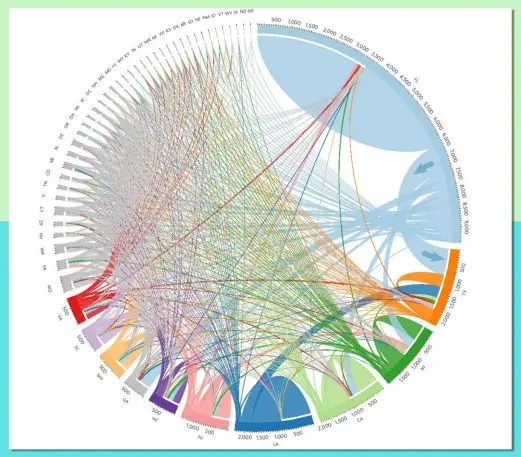Early in the morning of November 8 in Paradise, California, Mark Mesku got a call from his daughter. “She said, ‘Dad, you got to get out. The whole town’s on fire.'” Mesku looked outside, saw the sky filled with smoke, and shouted for his wife. After grabbing a few belongings, they got in their cars. “Three hours of pure darkness is what it took us to get out from our home,” he says. “The sky was pure black, except for the trees and cars that were burning up and exploding right next to us.” When they got to the main road–the only route out of Paradise–the other cars wouldn’t let them merge into traffic. Mesku had to force his truck onto the road, and let his wife merge in front. They later learned that cars behind them on the side road had burned.
They survived, and during the exodus Mesku even managed to rescue a woman whose car caught on fire. But their house was destroyed, and their neighbors were killed in the fire. Emotionally, Mesku says, he and his wife can’t go back to Paradise, where they had lived for 15 years. “I look at it as a graveyard,” he says. It also isn’t practical to go back now. The toxic aftermath of the fire will take time to clean up. The town’s infrastructure is gone, and with roughly 14,000 homes destroyed, so is the tax base. Mesku’s business, a dental lab, was destroyed, and the dentists that he worked with no longer have patients. Even the trees in his yard–40 massive Ponderosa pines–present an insurmountable obstacle, because taking down each damaged tree would cost $2,000 apiece, totaling more than the value of the land. Mesku and his wife had to move. In late December, they found a home in Rio Rancho, New Mexico.
The fire that destroyed Paradise was the most destructive in California history. But it’s an example of the kind of event that is becoming more likely as climate change intensifies disasters. And the Mesku family’s move is an example of the kind of forced relocation that will also become more common in the wake of hurricanes, wildfires, or slower-moving disasters like sea level rise.
After Hurricane Maria, thousands of Puerto Ricans moved to Florida. In Arizona, where extreme heat in Phoenix killed a record 172 people in 2017, so many people are moving north from Phoenix to Flagstaff that Flagstaff residents joke about building a wall to keep them out. In Louisiana, the federal government is paying to relocate an entire community from an island that is slowly sinking underwater. In Alaska, as the permafrost melts and water rises, villages are relocating. By the end of the century, around 13 million Americans may be displaced by sea level rise alone; globally, that number may be around 2 billion.

Miami Beach is spending millions to raise roads and install pumps and other infrastructure. But because of the local geography–with neighborhoods built on a bed of limestone that lets groundwater up through Swiss cheese-like holes–it’s possible that the problem can’t be engineered away. “I think Miami will have to be basically abandoned before the end of this century,” Pilkey says. One study estimated that around 2.5 million people will leave the area around Miami, Fort Lauderdale, and West Palm Beach, with many potentially ending up in inland cities nearby, like Orlando or Atlanta.
In the meantime, the area is beginning to experience so-called climate gentrification. Some investors are starting to buy property in lower-income neighborhoods that are on slightly higher ground, like Little Haiti–a historically black neighborhood in Miami where property values have risen steeply in the last few years. At the same time, some other low-income neighborhoods in the city, like Shorecrest, are already experiencing chronic flooding, and, unlike richer communities like Miami Beach, don’t have the same level of resources to try to deal with the water’s impact by installing pumps or other expensive infrastructure.
Poorer communities elsewhere will also be hit hardest, including parts of southern Louisiana or coastal Maryland or New Jersey where the poverty rate is high and there’s a risk of chronic flooding. As property values drop from the flooding and the local tax base erodes, cities will struggle to be able to afford to build infrastructure to adapt. Those who can least afford to move may also be most likely to be stuck in neighborhoods that can’t mitigate damage. The Mesku family was able to leave Paradise because they had good insurance; some others in the community didn’t.
“It’s a huge challenge in our economy that we have a lot of people who are essentially too poor to move to where the jobs are, which in this country has been largely in urban areas where people can’t afford to move,” says Jesse Keenan, a lecturer at the Harvard Graduate School of Design who studies adaptation to climate change. “Climate change is going to make the problem much more profound. What I’m concerned with and other people are concerned with is not necessarily where people are going to move, but who’s going to be trapped.”
For those who can leave, no destination is immune from the effects of climate change. Some parts of the U.S. will be hardest hit economically, particularly the Southeast, but the whole country is beginning to see negative impacts. In the Albuquerque area, where the Mesku family moved, the risk of severe drought is increasing. In the Pacific Northwest, a region that is often cited as one of the places that will be less impacted by global warming, wildfires are incurring record costs and smoke is starting to impact local economies. In Seattle, where most people don’t have air conditioning, there was a record-breaking heat wave in 2017 and again in 2018. In Madison, Wisconsin, record rainfall, a problem that is also linked to climate change, caused widespread flooding in August 2018. In Maine, as the ocean warms and acidifies, fisheries and the lobster industry could collapse. In Canada, a heat wave in Quebec in July 2018 was linked to more than 90 deaths. San Francisco hit a record 106 degrees in September and then in November went through 13 days of dangerous air quality as smoke from the Camp Fire blew into the area. As many as 13,000 properties in the Bay Area are at risk of chronic flooding by 2045.
The same thing is true globally–while some regions will be hardest hit, there’s no real escape. Last June, temperatures in Iran and Pakistan soared above 129 degrees. As climate change continues, one study suggests that parts of the Middle East and North Africa will suffer heat waves so intense that they could become uninhabitable. Indonesia is sinking as the sea level rises, making disasters like the 2018 tsunami deadlier. As sea level rise increases flooding and threatens freshwater supplies in some island nations, they could be uninhabitable by the middle of the century. But even regions like inland Sweden, which might seem relatively safe from the worst effects of climate change, are already experiencing some impacts; last summer, after a heat wave and drought, wildfires raged across the country, including areas north of the Arctic Circle.
In India, drought in some areas has forced millions of farmers to move, while others have fled flooding. In Bangladesh, sea level rise, worsening storms, and declines in crop productivity may displace nearly 20 million people by 2050; in South Asia as a whole, that number could be 40 million. In sub-Saharan Africa, a lack of rain for crops in some areas could displace 86 million people. In Latin America, threats to farming could drive 17 million climate migrants to cities. While much migration many happen within borders, climate change will also contribute to the refugee crisis and that, in, turn, could contribute to the rise of nationalism as other countries react against the influx of new residents. In some areas, it already is–the beginning of the conflict in Syria was linked to climate change, and many of the migrants currently fleeing Central America are being driven out because of the impacts of drought on agriculture. As rainfall drops farther in the future in countries like Honduras, and disasters like tropical storms increase, more people will be forced to move.
Adaptive infrastructure could help residents, at least in some places, have a better chance of staying in place. “Our perspective is that the best way to deal with this issue is to make investments in climate resilience,” says Francesco Femio, CEO of The Center for Climate and Security, which studies the security risks of climate change. The cities and countries where climate migrants are most likely to move can also begin to prepare to handle swelling populations.
It’s also important to note that the worst impacts are not yet inevitable. Since the industrial revolution, we’ve burned enough coal, oil, and gas to pump more than 400 billion tonnes of carbon dioxide into the atmosphere, driving up the global average temperature more than 1 degree Celsius. The last time that CO2 levels were this high, 3 million years ago, it led to camels living in the Arctic. There’s no doubt that global warming already underway will impact where people live. But if emissions drop–and if we reach net zero emissions by the middle of the century–it will make a radical difference. In Miami, for example, if emissions continue in a business-as-usual scenario, 146,000 homes will be at risk of chronic flooding by the end of the century. If emissions are cut enough to limit global warming to around 2 degrees, only 6,500 homes will be at risk. Cutting emissions could also dramatically reduce other impacts like drought and wildfire risk.
“A recent report by the Intergovernmental Panel on Climate Change made it clear in stark terms that in order to avoid the most severe climate impacts, we need to reduce our emissions drastically within the next 10 to 15 years,” says Kristina Dahl, a senior climate scientist with the Union of Concerned Scientists. “Doing so could spare over 4.1 million Americans–including nearly 2 million Floridians–from having to confront the difficult choice of whether to stay and cope with disruptive flooding or whether to move.”
Recognize your brand’s excellence by applying to this year’s Brands That Matter Awards before the final deadline, June 7.
Sign up for Brands That Matter notifications here.
